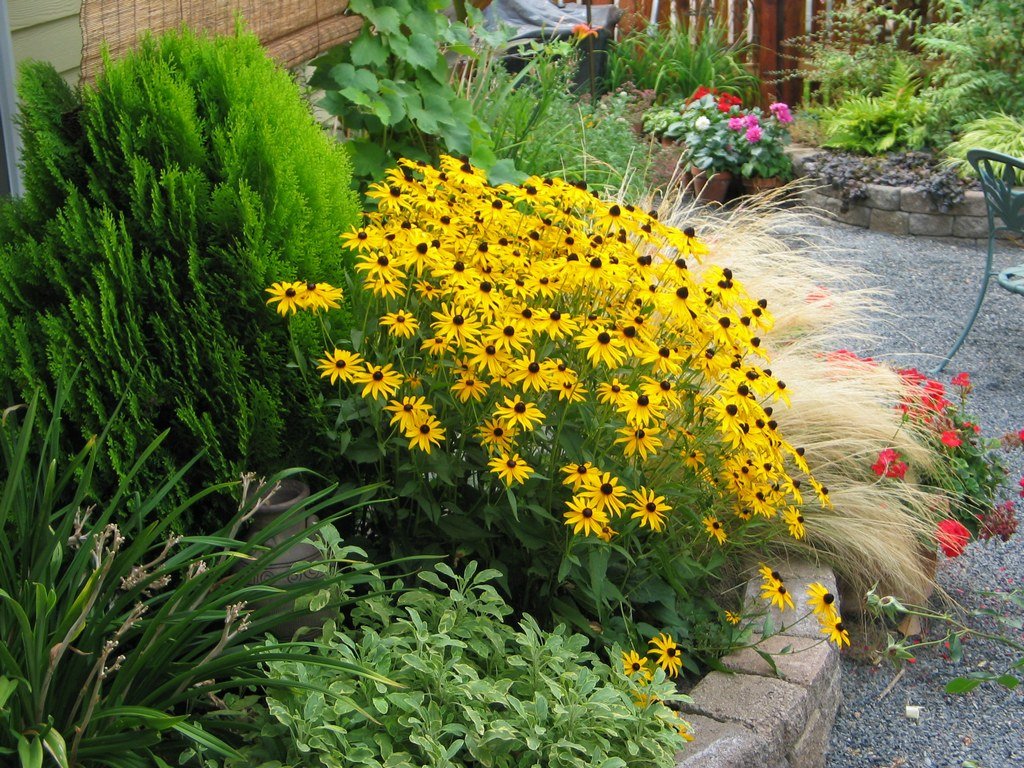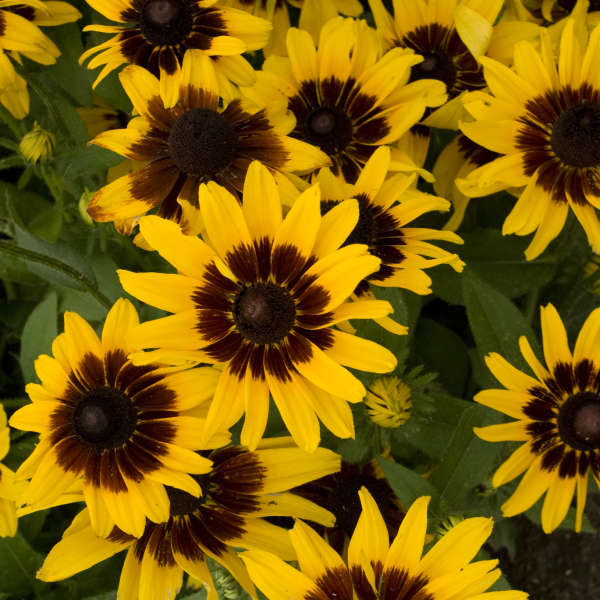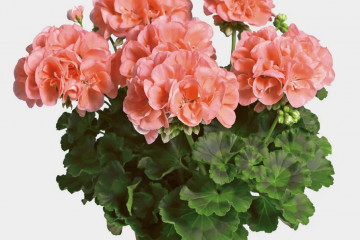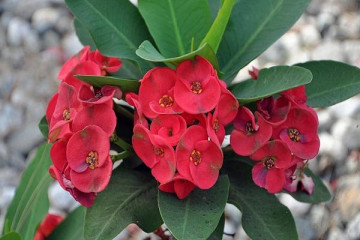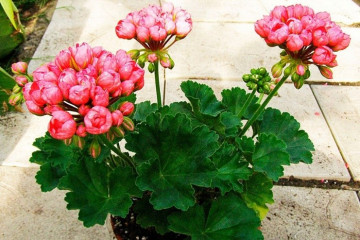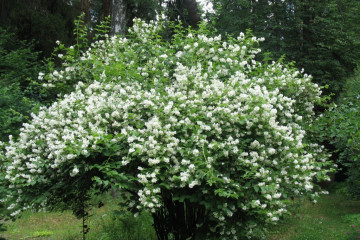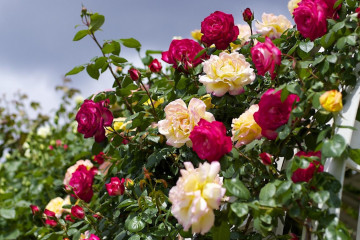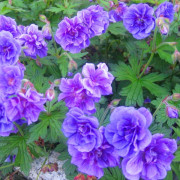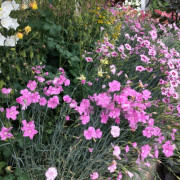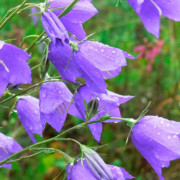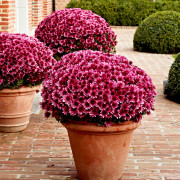Perennial rudbeckia - how it blooms, popular varieties
Content:
Perennial rudbeckia belongs to unpretentious flowers suitable for growing by beginners and experienced gardeners. Its chamomile-like flowers bloom at the beginning of summer and continue to decorate the flower bed in the garden until the first cold weather.
Perennial rudbeckia
It is widely known in the territory of the Russian Federation due to the variety of varieties. Popularity is associated with long flowering, unpretentiousness and ease of care. Landscape designers prefer to use Marmalade or Amber rudbeckia in their projects, and apartment residents decorate the balconies and loggias of undersized Beka, since its size does not exceed 30 cm.A large selection of varieties allows you to choose flowers for every taste, create an unusual flower garden, decorate an unsightly place on the site near the house.
Origin and appearance of rudbeckia
The rudbeckia flower belongs to the Asteraceae family, which contains 40 varieties. The natural conditions for its growth are the territory of the northern part of America. The colonialists, for the first time faced with unusual flowers, began to grow them as decorative ones. With their help, they quickly spread in Europe.
What does rudbeckia look like?
Main characteristics:
- stem - erect, covered with small villi, shimmering in the sunlight with a silvery color;
- foliage - oval, slightly elongated, pinnately complex or solid structure. The surface is painted in a bright green shade;
- inflorescences resemble a basket up to 20 cm in diameter. The central part of the flower is convex, brownish or blackish;
- petal of yellowish, orange, purple, pink, reddish-brown, orange-yellow colors.
The best varieties of perennial rudbeckia
The following flower varieties are more popular among florists.
Rudbeckia dissected (Rudbeckia Laciniata)
It grows up to 2 m, the root system is branched, horizontal. The lower leaves are pinnately complex, and the upper ones are tripartite. In diameter, the inflorescence-baskets are about 10 cm, they consist of several rows of bright yellow petals, similar to a ball. The dissected rudbeckia blooms for about 2 months, the period begins in July.At its height, almost the entire bush is covered with flowers.
Western rudbeckia (Rudbeckia Occidentalis)
Bushes ranging in size from 1.2 to 1.5 m. Rudbeckia flowers resemble fragrant or tongueless chamomile. Their shape is similar to a cone or an elongated black cone with greenish bracts. Flowering time is from mid-June to early September. In Russia, two western varieties of flowers have become widespread: Green Wizard and Black Beauty. Both are not afraid of dry weather.
Giant rudbeckia (Rudbeckia Maxima)
The perennial is different:
- a bluish-green tint of foliage with a touch of wax;
- outer flowers are bright yellow;
- petals in the central part of a dark color;
- a basket-inflorescence in the form of an oblong cone.
The average size of the giant rudbeckia is 1.2-1.5 m. The variety is resistant to frost and drought, prefers to grow in direct sunlight or in light partial shade. Flowering begins at the end of July and ends in the first week of September.
Rudbeckia lustrous (Rudbeckia nitida)
Reaches 250 cm, is distinguished by large flowers. Flower baskets are conical, yellowish-green in color, large petal, golden in color. Foliage of glossy rudbeckia with denticles at the edges, lanceolate with a dark green tint. Flowering begins in July and lasts until early September.
Rudbeckia beautiful, or beautiful (Rudbeckia Speciosa)
The bushes do not exceed 60 cm, the foliage has irregular denticles along the edge, an oblong or rounded shape. Inflorescences do not exceed 10 cm in diameter, consist of:
- from central flowers with brownish-black color;
- external - yellowish-orange color, at the end of the limb with three teeth.
Popular varieties of hybrid rudbeckia (Rudbeckia Hybrida)
Hybrids have been bred by breeders from several varieties of rudbeckia. General characteristics:
- large inflorescences 19 cm across;
- the central petals are brownish with an admixture of purple;
- external brownish-yellow shades up to 15 cm long.
Gloriosa Daisy
The size of hybrid bushes does not exceed 120 cm. The inflorescence basket is 16 cm in diameter, 1-3 rows of variegated or monochromatic petals with a yellowish tint are distinguished in it. The middle is dark brownish. The variety is distinguished by abundant flowering, it is capable of sowing in open ground on its own.
Double Daisy
The shoots are highly branched, the stems have a rough surface, the average size is 1.2 m. The foliage is whole, ovoid, double flower baskets, 17 cm in diameter. Double Daisy is a perennial, does not require special care. In a sunny place of growth, flowering is more abundant. Flowers from yellow to brown.
Annual rudbeckia varieties
Popular annuals include the following varieties.
Rudbeckia hairy (Rudbeckia Hirta)
It belongs to common varieties with thick and tough shoots, the surface of which looks rough due to coarse hairs. The foliage is about 10 cm long with jagged edges and a deep green fluff. The flowers have golden yellow, blue, red and white colors, the standard size is from 0.8 to 1 m. It is a biennial, in Russia it is grown as an annual variety. Reproduction of Hirt rudbeckia is carried out by seeds.
Russian gardeners prefer to plant varieties of Indian Summer, Cherry Brandy, Cappuccino.
Rudbeckia bicolor (Rudbeckia Bicolor)
Gardeners believe that this variety is easier to grow than terry (hairy) rudbeckia. It belongs to decorative annuals, grows no higher than 1 m. Flowers with a black core, dark orange inner and yellow outer circle.
Flowers prefer sunny places where they grow more actively. The variety has adapted well to local conditions; planting on the site takes place on May days. Flowers persist until late autumn. The inflorescences have a beautiful color: from yellowish or orange-yellow with a transition to reddish. The central part is dark in color.
Rudbeckia grasping (Rudbeckia Amplexicaulis)
The standard size of the bush does not exceed 80 cm, the foliage is in the form of an oval, slightly elongated, pointed at the top, along the edges there is an edge of small teeth. The brownish receptacle is raised by 0.3 cm, the upper petals of the rudbeckia are yellow.
Rudbeckia Triloba (Rudbeckia Triloba)
Annual is 0.6-1 m tall. Stems branch at the base, covered with stiff hairs. The foliage is oblong or ovoid, rich green in color and 12 cm long. The diameter of the baskets is 3-4 cm, the inner flowers are black and scarlet, the outer ones are orange, yellow, 2 cm long. Flowering does not differ in duration.
Growing rudbeckia flowers in the open field
The seedless planting option is suitable only for warm climatic conditions; in Siberia and in the north, seedlings must first be germinated. If the bushes were grown from seeds planted directly into the ground, then practice shows that in the first summer they will not bloom.
Planting seeds in the ground
This option is suitable for all varieties, except for terry varieties. They are engaged in disembarkation in June 14-20 in pre-prepared beds:
- there should be a distance of 15 cm between plants;
- disembarkation is done 1-2 cm deep;
- the seeds are covered with a minimum layer of earth;
- the beds are watered abundantly, monitoring the accidental washing out of the planting material.
Closer to September, small rosettes consisting of foliage will appear at the sowing site. The next summer, dense bushes will grow from them, which will begin to bloom earlier than those planted in spring.
Choosing a place for sowing
The varieties do not require special soil; they grow well on clayey lands. They do not like drafts and wind, shaded areas. Experienced gardeners are advised to plant them in the most lighted areas with slightly acidic, fertile soil.
Seedling
Recommended for cold climates or late spring. Practice has shown that violation of the rules of planting and care leads to the appearance of weak shoots that die when the temperature drops at night and during the day.
Planting seeds for seedlings
They are planted in special small boxes of 1-2 units. The soil in containers is pre-moistened, the plantings are covered with a thin layer of soil. The container is covered with a film, transferred to a room with a temperature of 20-22 ° C. The sprouts are expected in 1-2 weeks.
Growing seedlings
Before the first shoots, watering of crops takes place as needed, the containers are periodically ventilated, removing the collected condensate from the film. After the formation of two pairs of leaves, the bushes are seated so that they do not interfere with each other's normal development.
Hardening of seedlings
Hardening begins in early May. The boxes are taken out for 3-4 hours on a loggia or a glazed terrace.
Planting seedlings in open ground
Planting work begins with the onset of warmth. If it gets colder at night, then the beds need to be covered with agrospan, otherwise the young growth may die. Planting is carried out at a distance of 0.3-0.4 m between the bushes. After planting perennial varieties, the surface is covered with compost with a layer of 8 cm.
Caring for rudbeckia flowers in the garden
They do not tolerate waterlogging, they easily adapt to drought.If the flowers grow in a sunny place, then caring for them is not difficult.
Watering mode
The bushes are watered in the morning or evening, the frequency of watering depends on the weather. After each irrigation of the land, it must be loosened and weeded.
How to feed rudbeckia for lush flowering
Fertilizer is applied before flowering, preference is given to mineral complex additives containing potassium. For perennial varieties, feeding is carried out in the spring, it includes the following components:
- potassium sulfate;
- agriculture-7;
- nitrophosphate.
For 10 liters of water, 1 tbsp is taken. spoon of each ingredient, 3 liters of mixture is required for each m² of the garden. The procedure is repeated after 2-3 weeks. Organic feeding from the infusion of rotted grass will help to extend the flowering time. It is added in the middle of summer, when the rudbeckia is actively blooming.
Reproduction of rudbeckia
Annual species are usually propagated by seeds, perennials of rudbeckia - by dividing the rhizome.
Reproduction of rudbeckia by dividing the bush
How to plant rudbeckia in spring: the procedure is carried out every five years. Old bushes are dug up and divided into several parts. The resulting seedlings are planted in the ground at a distance.
Seed propagation
The planting material should not be planted deeply, as it may not ascend. You need to sow to a depth of 1-2 cm, pour a small layer of earth on top. The first shoots appear in 7-10 days from the day of sowing.
Collection and storage of rudbeckia seeds
The final ripening of the seeds takes place in the fall. The collection begins after they dry well on the bushes. The most viable seeds are located in the central part of the flowers, they are collected in rubber gloves. After the end of the procedures, the material is scattered over the surface of the newspaper, set aside in a room with good ventilation.
Planting and caring for perennial rudbeckia for beginners is simple. With the right place, it will bloom profusely until the onset of autumn days, and some varieties - until frost.
